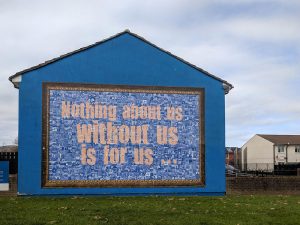What encourages nonprofits to attempt innovation in governance in the first place? In some of these case studies, a strong ideological intention drives a new model—or a set of underlying values—that demands a particular approach. In other cases, the motivation is simple evolution: an organization outgrows its governance model. Rather than a quick fix, the organization considers what is important for its future development that is different from its past. In other cases, a serious environmental shift, a merger or other type of crisis may provide the courage needed to innovate in the face of so much pressure for standardization.
One of the stronger factors in discouraging innovation is probably the need for external legitimacy—along with the fear of what change might bring. The relationship between the executive director and the board (as well as with foundations and other external stakeholders) is so fraught with potential and real power struggles that executive directors may believe it wiser to stick with a traditional or known model no matter what its limitations. This is a bit of a containment strategy.
If one tries to change the governance model for improved practice, it will probably not be a one-time thing. Change has to be made, assessed and remade, and carries both potential and significant risk each time. Add to this mix the ongoing tensions between centralization and decentralization, integration and differentiation, control and autonomy, and, last but not least, power sharing and power accumulation—all very complicated stuff that requires both self-consciousness and suaveness.
Another ingredient for implementation of a successful governance model may actually be resistance to change, after the organization actively decides what is sacred. What is the organization prepared to change and what can never be changed? The values and ideology of the organization and its mission should determine what changes are implemented, but these considerations will only have relevance if the organization deeply understands what the community values, and sets priorities and actions accordingly. Without this, the values and ideology can easily be confused with the personal agendas and power needs of a few. Meaningful questioning and debate can be seen as disloyal. Dissent can be muted. Thus good governance will not be performed. Above all, agents of change must resist the temptation to seek out the opinions of donors and corporate partners at the expense of their community.
Sign up for our free newsletters
Subscribe to NPQ's newsletters to have our top stories delivered directly to your inbox.
By signing up, you agree to our privacy policy and terms of use, and to receive messages from NPQ and our partners.
These cases also remind us that change is inherently a political process; it upsets the status quo and the taken-for-granted. Too often, we pretend change is rational and non-political, and it is not.
Models of governance are, in my opinion, ways of holding the power structures of the organization in place and, once you change them, you start to call into question all of your power relationships. This may be a very good thing, but it creates some degree of temporary imbalance between board and staff, between organization and community, between organizations and foundations, and between organizations and board members themselves. Change disrupts the stability of patterns that have become entrenched. The instability often results in groups defending their interests—but can we avoid this at this time? I would argue we should not. In the current of context of uncertainty, unpredictability and complexity, the need for new governance models has never been more evident and the opportunity should be seized with courage.
However, as we devise new models for governance, we must first and foremost ask whose agenda will dominate and whose interests are being advanced. Until the discourses around new governance models include values, power and ideology as a fundamental part of the conversation, change will be impossible to create, sustain and embrace in meaningful ways.













